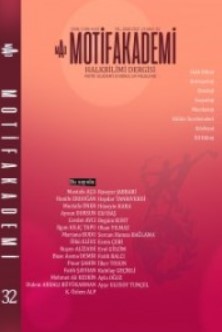TÜRK DÜNYASINDA ANA DİL ORTAKLIĞI VE AYRIMLAŞMA
MOTHER LANGUAGE COMMONALITY AND DIFFERENTIATION IN TURKIC WORLD
Author(s): Mustafa ÖnerSubject(s): Cultural history, Theoretical Linguistics, Historical Linguistics, Comparative Linguistics
Published by: Motif Halk Oyunları Eğitim ve Öğretim Vakfı
Keywords: Turkic World, mother tongue; linguistic differentiation; Turkic dialects; Turkic grammar;
Summary/Abstract: It is evident that the contemporary language structure, which has about 20 written languages in the Turkic World today, has developed on a "mother tongue" (Ursparche). In 11th century it is obvious that this spread of Turkic language, in which the map of the Turkic World today became almost constant and has come unchanged until today, has created a linguistic nationality (Turkishness) despite serious loss of mother tongue in our age. We know of the existence of five Turkic states at the time when Mahmud Kashgari wrote Divânu Luġâti't-Turk, where he gave detailed information about the Turkic dialects in 11th century (Karakhanid State, Volga-Bulgarian State, Seljuk State, Ghaznavid State and Uyghur Khaganate) However, Mahmud Kashgari mentions twenty Turkic tribes (such as Pechenek, Kipchak, Oghuz, Yemek, Bashgirt, Basmil, Yabaku, Tatar, Kirgiz, Chigil, Tuhsı, Yagma, Uyghur, etc.) in this work. The 11th century Turkic World and the tribal wealth that spread within these five Turkic states, whose map is also given in her rare work by our first Turcologist, is a picture that more or less reflects the linguistic differentiation a thousand years ago.
Journal: Motif Akademi Halkbilimi Dergisi
- Issue Year: 13/2020
- Issue No: 32
- Page Range: 1558-1569
- Page Count: 12
- Language: Turkish

